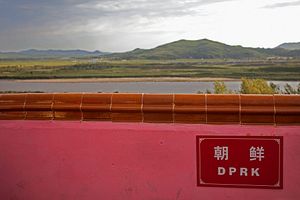More than two months after floods ravaged their secretive homeland, North Korean defectors living south of the border are convinced both the regime and international aid agencies have massively underreported the scale of the devastation.
Flooding at the end of August killed 138 people and left about 400 others missing in North Hamgyong Province, according to figures from the United Nations. Those numbers haven’t been updated since their announcement a fortnight after the disaster hit.
The UN Office for the Coordination of Humanitarian Affairs, citing North Korea government data, said the floods sparked by Typhoon Lionrock also damaged or destroyed more than 30,000 homes, displacing around 69,000 people.
Many North Koreans living in South Korea, however, believe the actual death toll is much higher than has been reported so far.
“How can the UN or other international organizations get that number? It’s only through the North Korean government,” one defector, surnamed Kim, told The Diplomat. “But the North Korean government doesn’t want to report that many people have died because people might be depressed or discouraged. The regime doesn’t want to see that happen, so they’ve just reported a low number.”
Kim said there appear to have been several hundred fatalities among soldiers stationed along the Chinese border alone, based on his inquiries with contacts he maintains in his isolated homeland. Another North Korean refugee, from the city of Chongjin, said that the word among her fellow defectors was that 400 houses had been washed away in just Hoeryong city, which straddles the border and the Tumen River, suggesting a possible death toll of up to 1,000 people.
Getting accurate information out of North Korea is notoriously difficult given the Kim Jong-un regime’s suffocating control over almost every aspect of society and the lack of an independent media. Pyongyang has an incentive to downplay any scenario that could undermine its claim, reinforced in ubiquitous propaganda, that it is uniquely capable of taking care of its people.
While the estimates of individual defectors can’t be taken as precise figures, anecdotally at least, they fit a broader pattern of skepticism over the official account of the floods.
“From what we hear from North Koreans who’ve left since then and from other reports, it seems like even just the human toll has been a lot higher than what’s actually been reported,” said Sokeel Park, director of research and strategy at Liberty in North Korea, a nonprofit that works with defectors.
Park noted that, even in relatively open countries, natural disasters tend to reveal their scale over time. And even it wanted to accurately report the scale of the situation, Pyongyang might just be incapable.
“It’s also possible they don’t have good information collated across different regions,” he said.
Oyunsaihan Dendevnorov, the UNICEF representative for North Korea, acknowledged that its figures were based on North Korean government data, but said its observations were in line with official reports.
“These official figures are broadly consistent with the situation our teams have observed on the ground in North Hamgyong province,” he said.

































